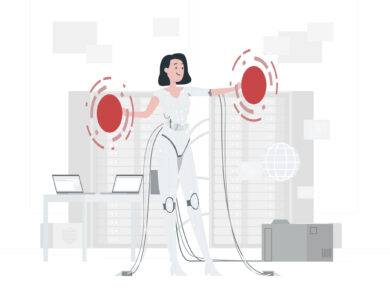“Numbers are the masters of the weak, but the slaves of the strong” – Charles Babbage.
When Charles Babbage, a British mathematician, discovered a magical device, called computer, he may not have expected that one day it would transform the character and composition of the workforce of the world. For him, it was something who would sit with him all day to assist him in his unusual mathematical expeditions. From an irrelevant position he was offered in his master’s lab, computer has come a long distance, I.e., it has grown so much.
At this juncture, it is an indispensable presence in our work environment. In other words, it is the backbone of the job platform.Naturally, it was the top players of the business sector who identified the opportunity at first – if said more accurately, who could afford to identify the chance in the beginning. It was a fact that owning a computer was a matter of luxury because of its high cost.As the cost started to climb down, the penetration moved deeper from the top. Fortunately, at present, even a small player in the business, though not every, can afford a computer.
Certainly, the lag in adoption, caused due to economic reasons, has contributed for the widening of the gap between the big players and the rest.Digitalisation naturally boosts productivity. It has allowed the technically advanced players to push far behind those who lacked the strength. As per a report published in OECD, an inter-governmental organisation established to help governments address new developments and challenges, the world has not yet successfully bridged the gap between the top and the rest in the area of technology adoption. The report points out that even in the western world the lag in adoption is evident.
The report speaks of a disturbing trend: when the SME sector, especially the micro sector, has not performed as expected in terms of technology adoption in the recent years, the top player of the business sector has done better in the area in the said period. It discusses the case of the SME sector in certain western countries such as Greece, Hungary, Poland, Portugal and Turkey, to explain the relation between the lag in adoption of technology and growth.
Primarily, the said countries are focused for the fact that in the said regions their SME sector is the pivotal force of their economy.The report indicates that the SME sector’s lag in adoption has stalled the growth potential of these countries considerably.It also notes the opposite scenario deliberately, to give a clear idea about the other side of the situation.For that task, it uses the case of the giant companies in the frontier countries (in other words, economically, socially and politically powerful countries) in the Europe, such as Denmark, Finland and Sweden.
The report claims that in the recent past the powerful countries in the continent of Europe have witnessed a tremendous growth rate. It attempts to explain the impressive economic performance with the commitment the giant companies in the said countries have shown towards technology adoption.Giving a deeper understanding, and throwing more light into the economic reality exist in the region, the report brings spotlight to the financial gap between the frontier countries in the Europe including Denmark and Sweden and the struggling powers such as Greece and Turkey.
The report is definitely an eye opener. It explains the relevance of technology adoption and the downside of lag in adoption.The interesting point is that the report presents the concept with convincing examples – that too from the western world.Technology is the best fuel for growth. No longer can it be ignored. To an extent, lag in technology adoption is responsible for the inequality exist in the Europe.
If the reason is technology, then the solution is also technology. Technology can provide a clear advantage in several sensitive areas concerning growth and success, especially communication, data analysis and task automation.
The repot hints that the Covid-19 outbreak has encouraged many SMEs to rethink about their lag in technology adoption, and forced these companies to chase technology aggressively – primarily those necessary to continue their business in the crisis period (in the condition of lockdown and similar difficulties).
Though it considers the development as a positive trend, it cautions the SME sector to stay vigil about the possible security threat. According to the data published in the report, at least 70 per cent of SMEs across the world have increased their use of technology during the Covid-19 period. In the United Kingdome alone, a good number of SMEs, during the Covid-19 period, has earmarked a considerable portion of their fund to acquire new technology capacities. The trend is visible not only in the developed world, but also in the developing world like Brazil. At least 55 per cent of SMEs in Brazil have improved their strength, especially in the area of communication (customer relation) through technology adoption during the period.
Hope that technology will grow as a powerful weapon to fight the evil of inequality and will help to create a society based on divine values such as freedom, equality and humility.Equality is a distant dream at this juncture. Every ‘ism’ speaks volumes about this but does little to achieve.Technology is the final destination – the final hope. If something that can bring a real difference, it is nothing but technology.







